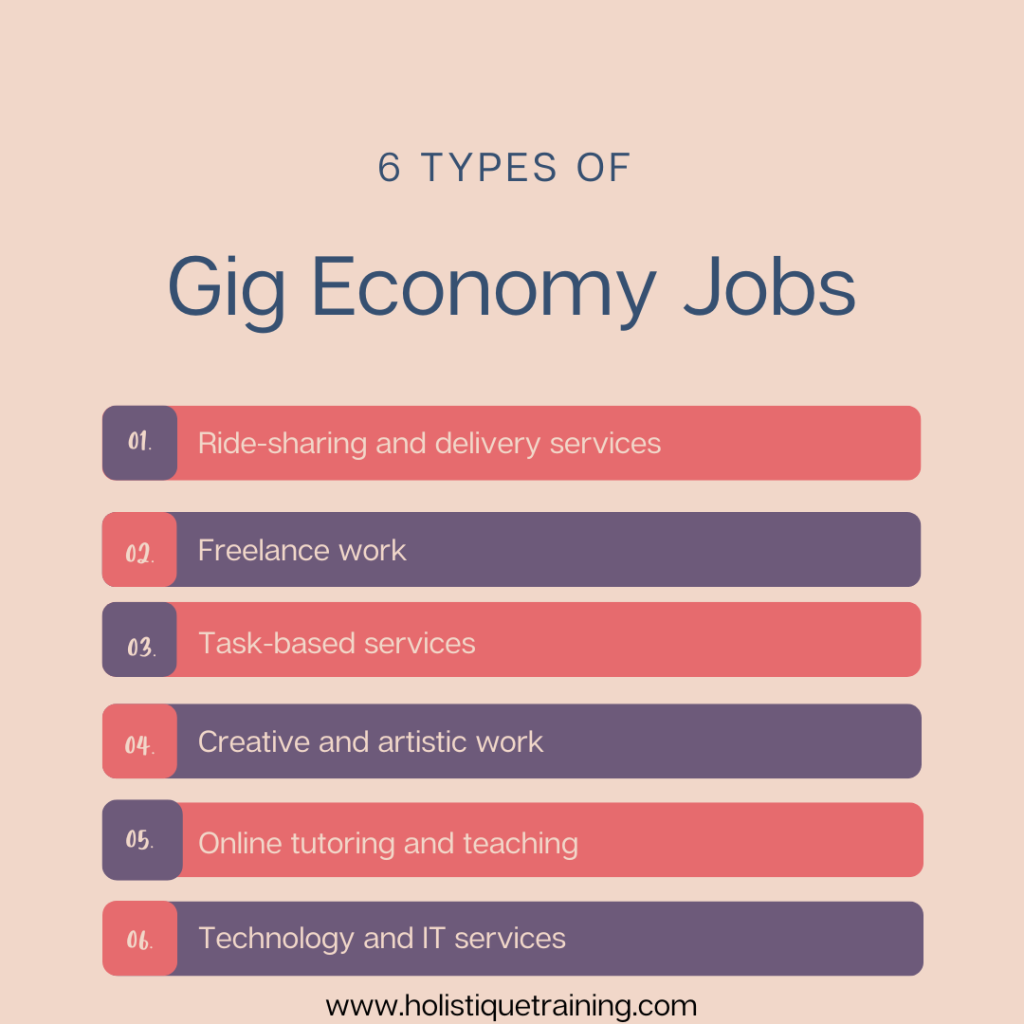The nature of work has evolved dramatically in recent years, giving rise to a transformative model known as the gig economy. This dynamic labor market emphasizes short-term, flexible jobs often facilitated by digital platforms. From freelance writing and graphic design to ride-sharing and delivery services, gig work is reshaping the way people earn, work-life balance is managed, and businesses operate.
In this article, we explore the gig economy’s evolution, its job types, the benefits and challenges for workers, the impact on businesses, strategies for leveraging gig talent, and what the future may hold.
What is the Gig Economy?
The gig economy represents a labor market dominated by project-based, temporary, or freelance work. Unlike traditional employment, which involves long-term contracts, fixed schedules, and stable wages, gig work is typically flexible and task-oriented.
This model empowers individuals to choose when, where, and how much they work, offering a level of freedom highly appealing to students, parents, and professionals seeking supplementary income. However, the model also introduces uncertainties such as lack of job security, inconsistent income, and limited benefits, prompting careful consideration by workers.
Historical Growth of the Gig Economy
Although informal gig work has existed for centuries, technology and digital platforms have accelerated its growth. Early marketplaces like eBay and Craigslist enabled individuals to sell services and goods directly to consumers. The smartphone era brought apps like Uber (2010) and TaskRabbit (2008), revolutionizing on-demand services and making gig work more accessible.
By the 2010s, millions embraced freelance work. According to McKinsey, 20–30% of the U.S. workforce engaged in independent work by 2016. The COVID-19 pandemic accelerated this trend, pushing workers toward flexible arrangements amid job losses and uncertainty. Today, 200–400 million people worldwide participate in the gig economy, with roughly one-third of Americans involved in some form of gig work.
Types of Gig Economy Jobs
The gig economy spans a diverse range of roles, each with distinct skills and requirements:
Ride-Sharing and Delivery Services
Companies like Uber, Lyft, DoorDash, and Postmates dominate transportation and logistics.
Ride-sharing: Drivers earn based on distance and time, offering flexible schedules ideal for part-time income.
Delivery services: Gig workers deliver groceries, meals, and packages, a sector that surged during the pandemic.
Freelance Work

Platforms such as Upwork, Fiverr, and Freelancer connect professionals with clients worldwide.
Creative services: Writers, designers, video editors, and developers can showcase portfolios and bid on projects.
Professional services: Consultants, marketers, and IT specialists provide expertise without long-term employment, often juggling multiple projects for higher earnings.
Task-Based Services
Websites like TaskRabbit allow individuals to perform errands, home repairs, or personal assistance.
Home services: Cleaning, gardening, or furniture assembly.
Personal assistance: Pet sitting, event organization, or errand running.
Creative and Artistic Work
Artists, musicians, and content creators monetize their talents via Etsy, YouTube, social media, and local gigs, often combining multiple income streams.
Online Tutoring and Teaching
Platforms like VIPKid and Chegg Tutors connect educators to students globally, while Udemy and Teachable enable experts to sell courses, generating flexible and passive income.
Technology and IT Services
The demand for tech expertise is soaring:
Web and app development: Freelancers work on startups or small business projects.
Cybersecurity and IT support: Specialists help businesses safeguard data.
Advantages of the Gig Economy
The gig economy offers both workers and businesses unique benefits:
For Workers
- Flexibility: Set your own schedule and balance personal commitments.
- Diverse opportunities: Explore multiple industries and build skills.
- Potential for higher earnings: Specialized skills often command premium rates.
- Independence: Greater autonomy fosters creative freedom and satisfaction.
- Skill development: Exposure to varied projects enhances expertise and networks.
For Businesses
- Flexible workforce: Scale staff according to demand.
- Cost savings: Reduce overhead and benefits costs.
- Access to specialized talent: Hire experts for specific short-term needs.
- Agility: Quickly respond to market changes and new projects.
Disadvantages of the Gig Economy
Despite its benefits, the gig economy poses significant challenges:
For Workers
- Income instability: Earnings fluctuate based on demand.
- No benefits: Health insurance, retirement, and paid leave are often absent.
- Self-employment taxes: Higher tax responsibilities and record-keeping.
- Isolation: Lack of social interaction can affect mental health.
- Market saturation: Increased competition can lower rates.
For Businesses
Quality control: Varying skill levels can lead to inconsistent results.
- Legal complexities: Misclassification of workers can result in fines.
- Lack of loyalty: Project-based work reduces long-term engagement.
- Communication barriers: Remote gig workers may complicate collaboration.
How the Gig Economy Impacts Businesses
The rise of gig work has reshaped business operations. Companies gain flexibility, cost efficiency, and access to specialized skills but face challenges in quality control, legal compliance, and workforce stability.
Opportunities include:
- Rapid scaling of workforce.
- Cost savings on benefits and infrastructure.
- Access to niche expertise for short-term projects.
Challenges include:
- Ensuring consistent quality.
- Navigating labor laws and tax obligations.
- Managing communication and team cohesion.
Businesses that strategically integrate gig workers, maintain strong communication, and invest in compliance tools can harness the full potential of this workforce.
Strategies to Leverage the Gig Economy
Businesses can maximize the gig economy’s benefits through practical strategies:
- Define Clear Project Requirements: Outline objectives, deliverables, and expected outcomes.
- Use Reliable Platforms: Select specialized marketplaces like Upwork or TaskRabbit.
- Foster Communication: Implement tools such as Slack or Trello and schedule check-ins.
- Build a Talent Pool: Maintain a database of trusted gig workers for quick access.
- Structured Onboarding: Introduce gig workers to company culture and tools.
- Monitor Performance: Set KPIs, provide feedback, and recognize exceptional work.
- Ensure Legal Compliance: Understand labor laws and correctly classify contractors.
- Leverage Technology: Use project management software, analytics, and AI-driven matching tools.
The Future of the Gig Economy
The gig economy is poised for further growth. Key trends include:
- Increased automation: Some traditional gigs may decline, while tech-related opportunities rise.
- Expansion of remote work: Access to global clients and projects will increase.
- Regulation: Governments may introduce protections for gig workers.
- Focus on worker well-being: Companies may offer benefits and resources to retain talent.
- Diversification of platforms: New niche-specific platforms will continue to emerge.
Frequently Asked Questions:
What is the gig economy?
The gig economy is a labor market dominated by short-term, flexible jobs, often facilitated through digital platforms. Workers can choose projects based on their skills, schedules, and interests.
What types of jobs exist in the gig economy?
Common gig jobs include ride-sharing and delivery services, freelance creative and professional work, task-based services, online tutoring, IT and technology projects, and content creation.
What are the main advantages of gig work for workers?
Gig work offers flexibility, diverse income opportunities, independence, skill development, and the potential to earn more than traditional employment, especially for specialized professionals.
What challenges do gig workers face?
Workers may encounter income instability, lack of benefits, high self-employment taxes, isolation, and increased competition, making careful financial planning essential.
How does the gig economy benefit businesses?
Companies can access a flexible workforce, reduce overhead costs, hire specialized talent, and respond quickly to market changes, increasing agility and efficiency.
What challenges do businesses face when hiring gig workers?
Businesses must manage quality control, legal compliance, communication barriers, and workforce continuity, while ensuring projects meet company standards.
How can companies successfully leverage the gig economy?
Strategies include defining clear project requirements, using reliable platforms, fostering strong communication, building a talent pool, onboarding effectively, monitoring performance, and ensuring compliance.
Conclusion
The gig economy represents a revolutionary shift in the world of work, offering both exciting opportunities and significant challenges. For workers, it provides flexibility, diverse income streams, and the chance to develop valuable skills, while also demanding careful financial planning due to income instability and lack of benefits. For businesses, the gig economy delivers access to specialized talent, cost savings, and operational agility, but requires strategic management to overcome quality, compliance, and communication challenges.



